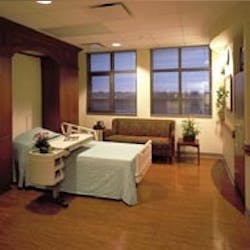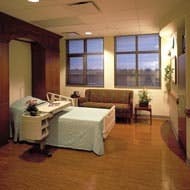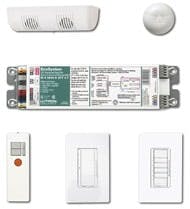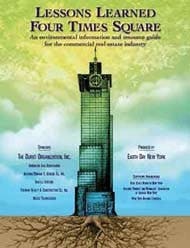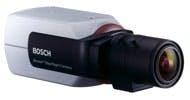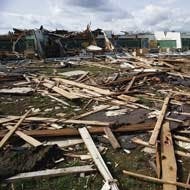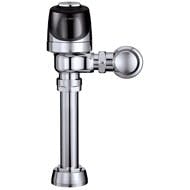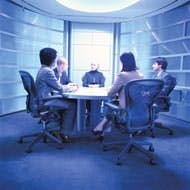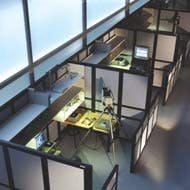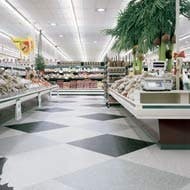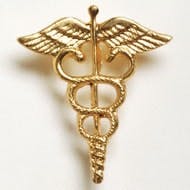100 Influences That Have Shaped the Buildings Market: Page 4
4 of 4
Buildings launches its 100th-anniversary celebration by showcasing some of the commercial and institutional buildings industry’s most momentous happenings - in no specific order - all of which have affected the “business of buildings” throughout the past century. Discover the proven processes, ideas, leaders, events, and landmarks, selected by the editorial staff.
76. Home-like healthcare design. Healthcare facilities have responded to the empowered consumer, offering choices regarding everything from lighting levels to room temperature to cooking their own meals. Patients want to spend recovery time in a facility that allows them to make their surroundings as comfortable and as home-like as possible.
77. Lighting controls. The origination of occupancy sensors, dimmers, timers, and DALI ballasts has offered energy savings, end-user flexibility, and higher-quality building environments.
78. High-performance schools. With a growing number of studies confirming that physical surroundings affect learning and teaching capabilities, a new philosophy of school design and operation has transformed educational environments. These facilities not only remove obstacles to learning and teaching, but supply a setting in which students can excel, teachers can explore new methods and approaches, and the community can gather together.
| 81. CCTV. Closed-circuit television originated in the 1950s; its main objective was to replace humans in visual security surveillance. Today’s advances in CCTV technology - digital and movement activated - have turned video surveillance into one of the most valuable loss prevention, safety/security, and management tools available. |
82. Water conservation in hotels. From the well-known towel/bed linen exchange programs (where multiple-night guests are given the option of re-using towels and linens during multiple-day stays) to faucet aerators/restrictors and low-flow showerheads and toilets, hotels across the country are making an effort to dial down the amount of water being used in their facilities.
84. Emergency planning/disaster recovery. Perhaps the most important result of numerous natural and manmade disaster conditions has been the industry’s preparedness and action plans to address such calamities. Building professionals have accepted product and design innovation, too, from technologies that literally strengthen a structure to withstand extraordinary circumstances to wider stairwells that enable more expedient egress. Savvy-minded professionals established the concept of back-office operations - off-site - to ensure that business continuity was 24/7.
85. Automatic sprinklers recommended in high-rises. In the 1967 revision of the National Building Code, automatic sprinklers were advocated in new high-rise buildings, encouraging proactive fire and life-safety measures.
87. Urban sprawl. Master-planned downtowns with finite space spurred a move of housing, retail, and community activities to the suburbs. Growth was the operative word - few community leaders established long-range and all-encompassing development strategies, however.
89. Life-cycle analysis. Durability and longevity of products and projects became a strategic focus when professionals began looking at total cost of ownership vs. initial capital outlay. It took many years of hindsight, however, to become a broadly accepted standard of effecting the business of buildings. Hindsight still
drives it.
90. Benchmarking. Measurable performance became the key - both against one’s own organization and similar structures and operating philosophies (involving like-minded professionals).
| 91. Glazing technology. With innovations such as low-E, colored, and insulated glass, lower energy costs, improved comfort, diminished sound transmission, and decreased condensation are all realizable - not to mention the added and significant design options. |
| 96. Open-plan offices. With the adoption of open-plan design in the 1960s, flexibility increased, moves were simplified, and bosses grudgingly shared office spaces with subordinates. The new arrangement gave birth to space-planning software and acoustical products aimed at increasing privacy and productivity. |
99. Chemical-based fire suppression. The popularity of the PC, proliferation of data centers, and importance of servers today has motivated the manufacture of clean-agent fire suppression systems that use chemicals rather than water. Most of these systems rob the fire of the oxygen it needs, smothering it and leaving computers, artwork, and furniture unharmed. A fire can damage your building, but it no longer has to cripple your business.
